DETONATION ENGINES THREAD
It’s been too long since a good propulsion thread. With enticing potential for supersonic & hypersonic flight, pulsed & rotating detonation engines are an exciting possibility for future high-speed vehicles. Let’s discuss 1/n
 https://abs.twimg.com/emoji/v2/... draggable="false" alt="🎥" title="Filmkamera" aria-label="Emoji: Filmkamera"> credit @PurdueEngineers
https://abs.twimg.com/emoji/v2/... draggable="false" alt="🎥" title="Filmkamera" aria-label="Emoji: Filmkamera"> credit @PurdueEngineers
It’s been too long since a good propulsion thread. With enticing potential for supersonic & hypersonic flight, pulsed & rotating detonation engines are an exciting possibility for future high-speed vehicles. Let’s discuss 1/n
So the top-line big number is the potential 25% theoretical efficiency improvement from pulsed & rotating detonation engine concepts (PDEs & RDEs, respectively) & ISP > 8000s for hydrogen fuel up to hypersonic Mach numbers, far exceeding other air-breathing and rocket engines 2/n
And this is in no way a new concept—detonation engines were theorized way back in the 19th century! With initial RDE experiments performed in the 1950s. But recent advances in experimental and computational methods have started to make this complex problem more tractable. 3/n
The first thing to discuss is the dif between a DEFLAGRATION and a DETONATION.
Deflagration = subsonic flame front
Detonation = supersonic flame front
Most flames, fires, and explosions you see are deflagrations
Detonations will come with a shock front 4/n
Deflagration = subsonic flame front
Detonation = supersonic flame front
Most flames, fires, and explosions you see are deflagrations
Detonations will come with a shock front 4/n
With the #BeirutBlast you actually had a deflagration transition rapidly to a detonation 5/n
So why does this matter? Most all engines feature combustion via deflagration, but detonation is such a rapid process it provides a more efficient reaction, compressing and heating air in a constant volume process that in theory delivers more thrust for a given mass of fuel 6/n
So the basic premise of a det engine is to attempt to harness this increased thermo efficiency by burning fuel w a det process instead of deflagration. With the right fuel-oxidizer ratio, pressure, & temp, a detonation can occur + NO COMPEESSOR is needed! 7/n
 https://abs.twimg.com/emoji/v2/... draggable="false" alt="🎥" title="Filmkamera" aria-label="Emoji: Filmkamera"> UT Arlington
https://abs.twimg.com/emoji/v2/... draggable="false" alt="🎥" title="Filmkamera" aria-label="Emoji: Filmkamera"> UT Arlington
One design is the pulsed detonation engine (PDE): Create a detonable mixture in a combustion chamber, then ignite and let the detonation shock wave and high pressure exhaust generate thrust out of a tube. Purge the system, and repeat as fast as you can. 8/n
 https://abs.twimg.com/emoji/v2/... draggable="false" alt="🎥" title="Filmkamera" aria-label="Emoji: Filmkamera"> Fred Schauer AFRL
https://abs.twimg.com/emoji/v2/... draggable="false" alt="🎥" title="Filmkamera" aria-label="Emoji: Filmkamera"> Fred Schauer AFRL
A PDE has actually been flown! In 2008 @AFResearchLab fitted a Long-EZ w 4x 20Hz PDE tubes, producing an overall 80 Hz pulse rate and 200 lbs of thrust. The take-off was jet-assisted for safety, but this was the first flight demo of det engine tech. 9/n
https://www.af.mil/News/Article-Display/Article/123534/pulsed-detonation-engine-flies-into-history/">https://www.af.mil/News/Arti...
https://www.af.mil/News/Article-Display/Article/123534/pulsed-detonation-engine-flies-into-history/">https://www.af.mil/News/Arti...
Don’t get this confused with a pulse jet engine, which looks about the same (stovepipes) but uses deflagration rather than detonation. The less efficient cousin of the PDE was even used in the German V-1 flying bomb in WWII. 10/n
 https://abs.twimg.com/emoji/v2/... draggable="false" alt="📷" title="Kamera" aria-label="Emoji: Kamera"> https://www.tellerreport.com/amp/2019-11-29---parts-german-v1-from-world-war-ii-found-at-deventer-.SJX3GmYRhr.html">https://www.tellerreport.com/amp/2019-...
https://abs.twimg.com/emoji/v2/... draggable="false" alt="📷" title="Kamera" aria-label="Emoji: Kamera"> https://www.tellerreport.com/amp/2019-11-29---parts-german-v1-from-world-war-ii-found-at-deventer-.SJX3GmYRhr.html">https://www.tellerreport.com/amp/2019-...
There are some clear deficiencies with the PDE design however, such as the need for a long pipe that needs to be constantly purged/refilled as well as the pulsed propulsion itself.
Enter the rotating detonation engine (RDE) to address these issues
11/n
 https://abs.twimg.com/emoji/v2/... draggable="false" alt="🎥" title="Filmkamera" aria-label="Emoji: Filmkamera"> https://www.sciencealert.com/scientists-are-trying-to-create-a-brand-new-rocket-type-but-it-s-got-a-problem/amp">https://www.sciencealert.com/scientist...
https://abs.twimg.com/emoji/v2/... draggable="false" alt="🎥" title="Filmkamera" aria-label="Emoji: Filmkamera"> https://www.sciencealert.com/scientists-are-trying-to-create-a-brand-new-rocket-type-but-it-s-got-a-problem/amp">https://www.sciencealert.com/scientist...
Enter the rotating detonation engine (RDE) to address these issues
11/n
Here’s the RDE premise: you initiate a detonation in a thin annulus (cylindrical chamber) so a shock wave (or waves) races around in a circle indefinitely, providing an enormous pressure gain while igniting a fuel/ox mix injected at the inlet 12/n
 https://abs.twimg.com/emoji/v2/... draggable="false" alt="🎥" title="Filmkamera" aria-label="Emoji: Filmkamera"> @convergecfd & @argonne
https://abs.twimg.com/emoji/v2/... draggable="false" alt="🎥" title="Filmkamera" aria-label="Emoji: Filmkamera"> @convergecfd & @argonne
You can operate in an air-breathing mode with an appropriate inlet integration or inject LOX and run as a rotating detonation rocket engine (RDRE). You also need to incorporate an exhaust/nozzle which isn’t straightforward. 13/n
 https://abs.twimg.com/emoji/v2/... draggable="false" alt="🎥" title="Filmkamera" aria-label="Emoji: Filmkamera"> http://www.mech.kyutech.ac.jp/rfd/eng-detonation2.html">https://www.mech.kyutech.ac.jp/rfd/eng-d...
https://abs.twimg.com/emoji/v2/... draggable="false" alt="🎥" title="Filmkamera" aria-label="Emoji: Filmkamera"> http://www.mech.kyutech.ac.jp/rfd/eng-detonation2.html">https://www.mech.kyutech.ac.jp/rfd/eng-d...
On top of the efficiency boost, a benefit of RDEs/PDEs is that they provide true static thrust, meaning they can start themselves at rest without airflow. Scram/ramjets require a supersonic inflow & even turbofans need a starter for the compressor 14/n
 https://abs.twimg.com/emoji/v2/... draggable="false" alt="📷" title="Kamera" aria-label="Emoji: Kamera"> https://www.semanticscholar.org/paper/Analytical-Models-for-the-Thrust-of-a-Rotating-Shepherd-Kasahara/2c18eff404e57e98df511e6e01efbdfd33c6e535">https://www.semanticscholar.org/paper/Ana...
https://abs.twimg.com/emoji/v2/... draggable="false" alt="📷" title="Kamera" aria-label="Emoji: Kamera"> https://www.semanticscholar.org/paper/Analytical-Models-for-the-Thrust-of-a-Rotating-Shepherd-Kasahara/2c18eff404e57e98df511e6e01efbdfd33c6e535">https://www.semanticscholar.org/paper/Ana...
A note on RDEs: they generally aren’t restricted to a single det wave. On the contrary, it’s more common to see a system of “chasing” waves. I’ve seen simulations w as many as 7. But the interaction is complex & has been a focus of recent research 15/n
 https://abs.twimg.com/emoji/v2/... draggable="false" alt="🎥" title="Filmkamera" aria-label="Emoji: Filmkamera"> https://youtu.be/pHcxI-8GtZg ">https://youtu.be/pHcxI-8Gt...
https://abs.twimg.com/emoji/v2/... draggable="false" alt="🎥" title="Filmkamera" aria-label="Emoji: Filmkamera"> https://youtu.be/pHcxI-8GtZg ">https://youtu.be/pHcxI-8Gt...
Enhanced CFD modeling capabilities in recent years have really helped move RDE research forward. As you’ve seen in the videos the simulations are getting more robust and are now able to predict bulk flow properties & wave structure w accuracy 16/n
 https://abs.twimg.com/emoji/v2/... draggable="false" alt="📷" title="Kamera" aria-label="Emoji: Kamera"> https://aerospaceamerica.aiaa.org/year-in-review/funding-increase-for-pressure-gain-begins-to-pay-off/">https://aerospaceamerica.aiaa.org/year-in-r...
https://abs.twimg.com/emoji/v2/... draggable="false" alt="📷" title="Kamera" aria-label="Emoji: Kamera"> https://aerospaceamerica.aiaa.org/year-in-review/funding-increase-for-pressure-gain-begins-to-pay-off/">https://aerospaceamerica.aiaa.org/year-in-r...
There are many challenges for experiments. For ex.: you’re measuring a detonation, RDEs have a thin round channel where the interesting stuff happens (access issues), air is moving at supersonic speed, and rigs are tricky/expensive to run 17/n
 https://abs.twimg.com/emoji/v2/... draggable="false" alt="🎥" title="Filmkamera" aria-label="Emoji: Filmkamera"> TU Berlin https://youtu.be/ERTei7D8LJs ">https://youtu.be/ERTei7D8L...
https://abs.twimg.com/emoji/v2/... draggable="false" alt="🎥" title="Filmkamera" aria-label="Emoji: Filmkamera"> TU Berlin https://youtu.be/ERTei7D8LJs ">https://youtu.be/ERTei7D8L...
There have been some creative solutions to the experimental challenges w the thin & round geometry (round windows are weird). Some have used det. channels that “unwrap” the RDE, providing a linear path for meas. But the physics don’t quite match 18/n
 https://abs.twimg.com/emoji/v2/... draggable="false" alt="📷" title="Kamera" aria-label="Emoji: Kamera"> https://arc.aiaa.org/doi/abs/10.2514/6.2018-4966">https://arc.aiaa.org/doi/abs/1...
https://abs.twimg.com/emoji/v2/... draggable="false" alt="📷" title="Kamera" aria-label="Emoji: Kamera"> https://arc.aiaa.org/doi/abs/10.2514/6.2018-4966">https://arc.aiaa.org/doi/abs/1...
A particularly clever work-around is the “racetrack RDE” at U. Michigan where, as the name implies, the channel is shaped like a NASCAR-style racetrack. This provides linear sections for flat windows while maintaining the physics of an annular RDE 19/n
 https://abs.twimg.com/emoji/v2/... draggable="false" alt="📷" title="Kamera" aria-label="Emoji: Kamera"> https://arc.aiaa.org/doi/abs/10.2514/6.2018-4779">https://arc.aiaa.org/doi/abs/1...
https://abs.twimg.com/emoji/v2/... draggable="false" alt="📷" title="Kamera" aria-label="Emoji: Kamera"> https://arc.aiaa.org/doi/abs/10.2514/6.2018-4779">https://arc.aiaa.org/doi/abs/1...
Researchers @AFResearchLab went a different route & made the entire outer shell of an RDE test rig out of quartz! They’ve gotten some excellent data and it’s made for some striking visuals. 20/n
 https://abs.twimg.com/emoji/v2/... draggable="false" alt="📷" title="Kamera" aria-label="Emoji: Kamera"> https://www.sciencedirect.com/science/article/abs/pii/S0010218016302693">https://www.sciencedirect.com/science/a...
https://abs.twimg.com/emoji/v2/... draggable="false" alt="📷" title="Kamera" aria-label="Emoji: Kamera"> https://www.sciencedirect.com/science/article/abs/pii/S0010218016302693">https://www.sciencedirect.com/science/a...
RDE research is particularly near and dear for me because we have support from @AFOSR ( https://abs.twimg.com/emoji/v2/... draggable="false" alt="🙏🏻" title="Folded hands (heller Hautton)" aria-label="Emoji: Folded hands (heller Hautton)"> thank you!) here @UTSA to advance experimental techniques used for RDEs. We’ve even got plans to build a detonation channel! 21/n
https://abs.twimg.com/emoji/v2/... draggable="false" alt="🙏🏻" title="Folded hands (heller Hautton)" aria-label="Emoji: Folded hands (heller Hautton)"> thank you!) here @UTSA to advance experimental techniques used for RDEs. We’ve even got plans to build a detonation channel! 21/n
 https://abs.twimg.com/emoji/v2/... draggable="false" alt="🎥" title="Filmkamera" aria-label="Emoji: Filmkamera"> TU Berlin https://youtu.be/ERTei7D8LJs ">https://youtu.be/ERTei7D8L...
https://abs.twimg.com/emoji/v2/... draggable="false" alt="🎥" title="Filmkamera" aria-label="Emoji: Filmkamera"> TU Berlin https://youtu.be/ERTei7D8LJs ">https://youtu.be/ERTei7D8L...
As enticing as detonation engines may sound (the implications for 25% increased efficiency are massive) this technology is far from ready for prime time. While there are many test rigs out there, these typically only run for a few seconds at a time 22/n
 https://abs.twimg.com/emoji/v2/... draggable="false" alt="🎥" title="Filmkamera" aria-label="Emoji: Filmkamera"> https://youtu.be/AP6dOa0AcCw ">https://youtu.be/AP6dOa0Ac...
https://abs.twimg.com/emoji/v2/... draggable="false" alt="🎥" title="Filmkamera" aria-label="Emoji: Filmkamera"> https://youtu.be/AP6dOa0AcCw ">https://youtu.be/AP6dOa0Ac...
There are many practical problems left to overcome, from sustained & consistent detonation wave structure, to repeatable initiation, to integration with an actual flight vehicle, inlet, and exhaust 23/n
 https://abs.twimg.com/emoji/v2/... draggable="false" alt="🎥" title="Filmkamera" aria-label="Emoji: Filmkamera"> UC Det Lab https://youtu.be/YWCRB8_s4fA ">https://youtu.be/YWCRB8_s4...
https://abs.twimg.com/emoji/v2/... draggable="false" alt="🎥" title="Filmkamera" aria-label="Emoji: Filmkamera"> UC Det Lab https://youtu.be/YWCRB8_s4fA ">https://youtu.be/YWCRB8_s4...
Additional Sources 24/n
UT Arlington PDE sure https://arc.uta.edu/research/pde.htm
Shaw">https://arc.uta.edu/research/... et al. review 2019 https://www.intechopen.com/online-first/a-theoretical-review-of-rotating-detonation-engines
Nicholas">https://www.intechopen.com/online-fi... et al. 1957 early RDE work https://arc.aiaa.org/doi/abs/10.2514/8.12851
Deflagration/detonation">https://arc.aiaa.org/doi/abs/1... figure https://www.sciencedirect.com/topics/engineering/deflagration">https://www.sciencedirect.com/topics/en...
UT Arlington PDE sure https://arc.uta.edu/research/pde.htm
Shaw">https://arc.uta.edu/research/... et al. review 2019 https://www.intechopen.com/online-first/a-theoretical-review-of-rotating-detonation-engines
Nicholas">https://www.intechopen.com/online-fi... et al. 1957 early RDE work https://arc.aiaa.org/doi/abs/10.2514/8.12851
Deflagration/detonation">https://arc.aiaa.org/doi/abs/1... figure https://www.sciencedirect.com/topics/engineering/deflagration">https://www.sciencedirect.com/topics/en...
I’d love to say more but Twitter has cut me off! Feel free to leave questions
If you want to learn more there’s also an excellent recent video from Scott Manley @DJSnM that goes into the thermodynamics of the cycle & provides some instructive visuals 25/n https://youtu.be/rG_Eh0J_4_s ">https://youtu.be/rG_Eh0J_4...
If you want to learn more there’s also an excellent recent video from Scott Manley @DJSnM that goes into the thermodynamics of the cycle & provides some instructive visuals 25/n https://youtu.be/rG_Eh0J_4_s ">https://youtu.be/rG_Eh0J_4...

 Read on Twitter
Read on Twitter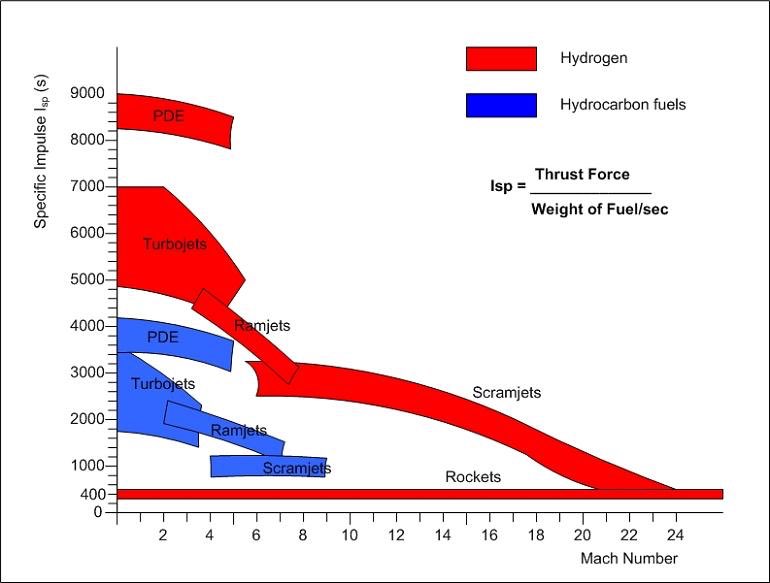
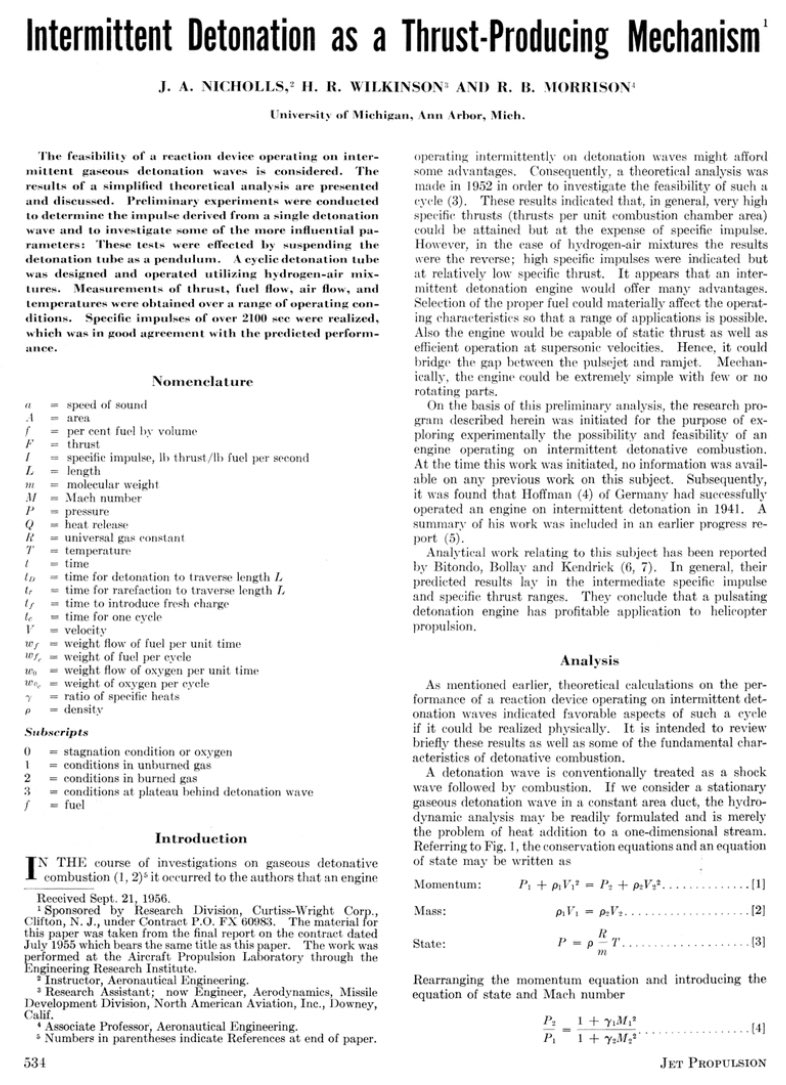

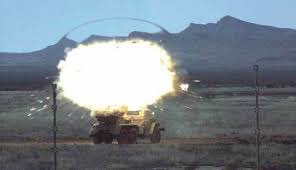

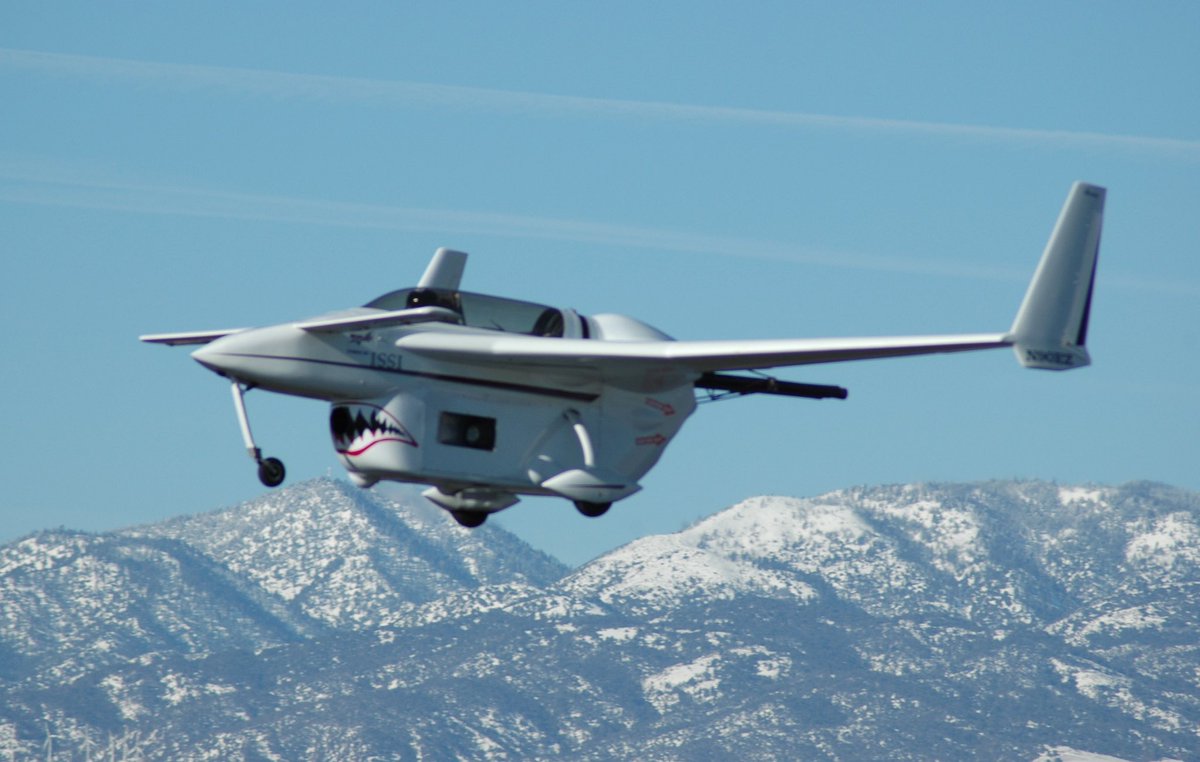
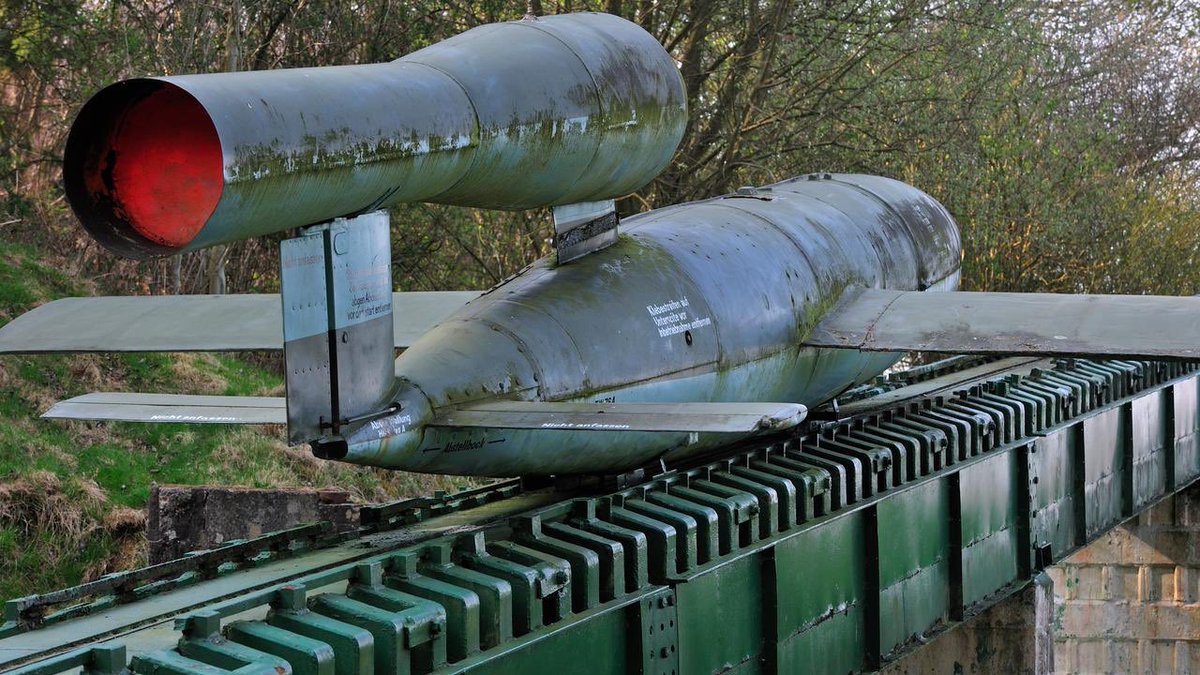 https://www.tellerreport.com/amp/2019-..." title="Don’t get this confused with a pulse jet engine, which looks about the same (stovepipes) but uses deflagration rather than detonation. The less efficient cousin of the PDE was even used in the German V-1 flying bomb in WWII. 10/nhttps://abs.twimg.com/emoji/v2/... draggable="false" alt="📷" title="Kamera" aria-label="Emoji: Kamera"> https://www.tellerreport.com/amp/2019-..." class="img-responsive" style="max-width:100%;"/>
https://www.tellerreport.com/amp/2019-..." title="Don’t get this confused with a pulse jet engine, which looks about the same (stovepipes) but uses deflagration rather than detonation. The less efficient cousin of the PDE was even used in the German V-1 flying bomb in WWII. 10/nhttps://abs.twimg.com/emoji/v2/... draggable="false" alt="📷" title="Kamera" aria-label="Emoji: Kamera"> https://www.tellerreport.com/amp/2019-..." class="img-responsive" style="max-width:100%;"/>
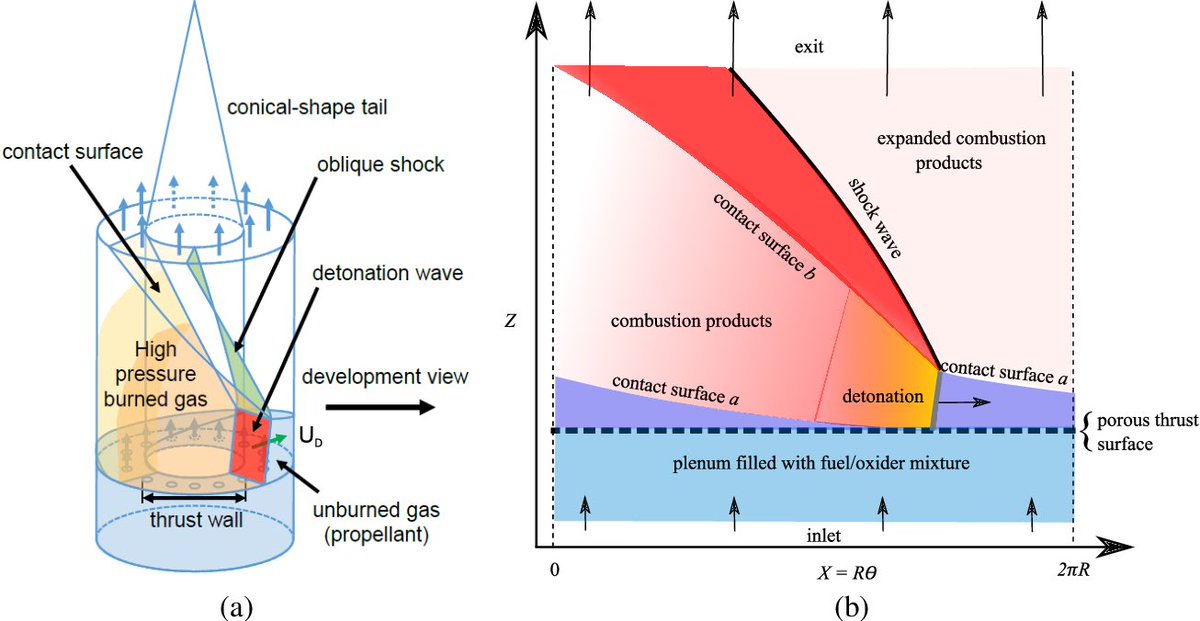 https://www.semanticscholar.org/paper/Ana..." title="On top of the efficiency boost, a benefit of RDEs/PDEs is that they provide true static thrust, meaning they can start themselves at rest without airflow. Scram/ramjets require a supersonic inflow & even turbofans need a starter for the compressor 14/nhttps://abs.twimg.com/emoji/v2/... draggable="false" alt="📷" title="Kamera" aria-label="Emoji: Kamera"> https://www.semanticscholar.org/paper/Ana..." class="img-responsive" style="max-width:100%;"/>
https://www.semanticscholar.org/paper/Ana..." title="On top of the efficiency boost, a benefit of RDEs/PDEs is that they provide true static thrust, meaning they can start themselves at rest without airflow. Scram/ramjets require a supersonic inflow & even turbofans need a starter for the compressor 14/nhttps://abs.twimg.com/emoji/v2/... draggable="false" alt="📷" title="Kamera" aria-label="Emoji: Kamera"> https://www.semanticscholar.org/paper/Ana..." class="img-responsive" style="max-width:100%;"/>
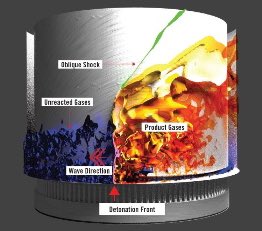 https://aerospaceamerica.aiaa.org/year-in-r..." title="Enhanced CFD modeling capabilities in recent years have really helped move RDE research forward. As you’ve seen in the videos the simulations are getting more robust and are now able to predict bulk flow properties & wave structure w accuracy 16/nhttps://abs.twimg.com/emoji/v2/... draggable="false" alt="📷" title="Kamera" aria-label="Emoji: Kamera"> https://aerospaceamerica.aiaa.org/year-in-r..." class="img-responsive" style="max-width:100%;"/>
https://aerospaceamerica.aiaa.org/year-in-r..." title="Enhanced CFD modeling capabilities in recent years have really helped move RDE research forward. As you’ve seen in the videos the simulations are getting more robust and are now able to predict bulk flow properties & wave structure w accuracy 16/nhttps://abs.twimg.com/emoji/v2/... draggable="false" alt="📷" title="Kamera" aria-label="Emoji: Kamera"> https://aerospaceamerica.aiaa.org/year-in-r..." class="img-responsive" style="max-width:100%;"/>
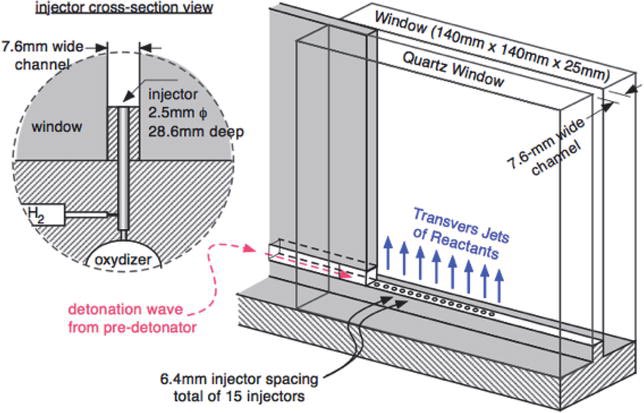 https://arc.aiaa.org/doi/abs/1..." title="There have been some creative solutions to the experimental challenges w the thin & round geometry (round windows are weird). Some have used det. channels that “unwrap” the RDE, providing a linear path for meas. But the physics don’t quite match 18/nhttps://abs.twimg.com/emoji/v2/... draggable="false" alt="📷" title="Kamera" aria-label="Emoji: Kamera"> https://arc.aiaa.org/doi/abs/1..." class="img-responsive" style="max-width:100%;"/>
https://arc.aiaa.org/doi/abs/1..." title="There have been some creative solutions to the experimental challenges w the thin & round geometry (round windows are weird). Some have used det. channels that “unwrap” the RDE, providing a linear path for meas. But the physics don’t quite match 18/nhttps://abs.twimg.com/emoji/v2/... draggable="false" alt="📷" title="Kamera" aria-label="Emoji: Kamera"> https://arc.aiaa.org/doi/abs/1..." class="img-responsive" style="max-width:100%;"/>
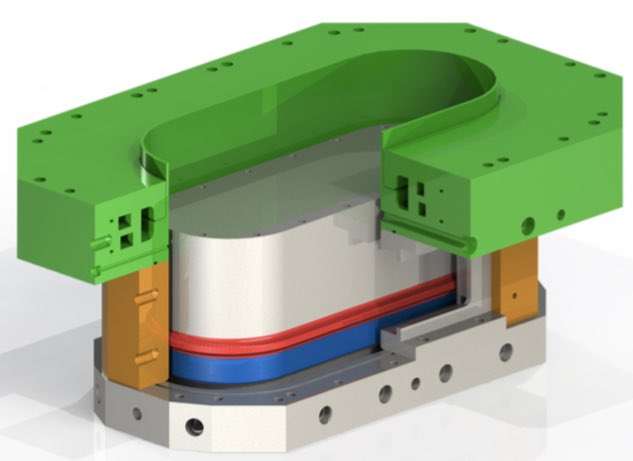 https://arc.aiaa.org/doi/abs/1..." title="A particularly clever work-around is the “racetrack RDE” at U. Michigan where, as the name implies, the channel is shaped like a NASCAR-style racetrack. This provides linear sections for flat windows while maintaining the physics of an annular RDE 19/nhttps://abs.twimg.com/emoji/v2/... draggable="false" alt="📷" title="Kamera" aria-label="Emoji: Kamera"> https://arc.aiaa.org/doi/abs/1..." class="img-responsive" style="max-width:100%;"/>
https://arc.aiaa.org/doi/abs/1..." title="A particularly clever work-around is the “racetrack RDE” at U. Michigan where, as the name implies, the channel is shaped like a NASCAR-style racetrack. This provides linear sections for flat windows while maintaining the physics of an annular RDE 19/nhttps://abs.twimg.com/emoji/v2/... draggable="false" alt="📷" title="Kamera" aria-label="Emoji: Kamera"> https://arc.aiaa.org/doi/abs/1..." class="img-responsive" style="max-width:100%;"/>
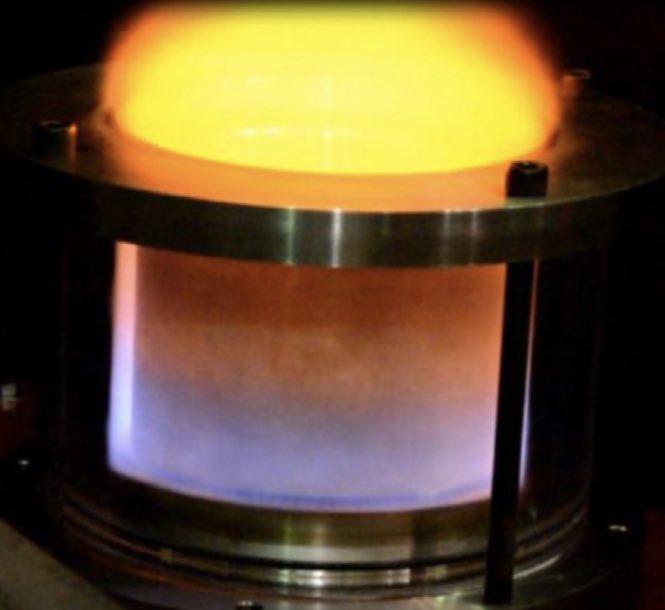 https://www.sciencedirect.com/science/a..." title="Researchers @AFResearchLab went a different route & made the entire outer shell of an RDE test rig out of quartz! They’ve gotten some excellent data and it’s made for some striking visuals. 20/nhttps://abs.twimg.com/emoji/v2/... draggable="false" alt="📷" title="Kamera" aria-label="Emoji: Kamera"> https://www.sciencedirect.com/science/a...">
https://www.sciencedirect.com/science/a..." title="Researchers @AFResearchLab went a different route & made the entire outer shell of an RDE test rig out of quartz! They’ve gotten some excellent data and it’s made for some striking visuals. 20/nhttps://abs.twimg.com/emoji/v2/... draggable="false" alt="📷" title="Kamera" aria-label="Emoji: Kamera"> https://www.sciencedirect.com/science/a...">
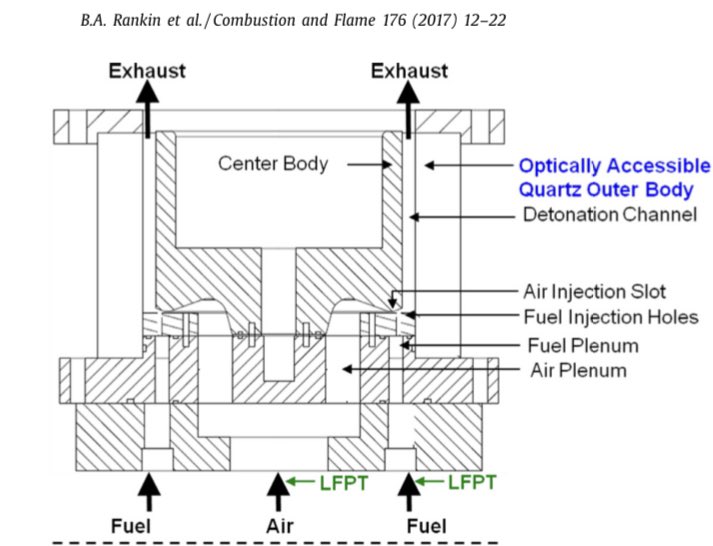 https://www.sciencedirect.com/science/a..." title="Researchers @AFResearchLab went a different route & made the entire outer shell of an RDE test rig out of quartz! They’ve gotten some excellent data and it’s made for some striking visuals. 20/nhttps://abs.twimg.com/emoji/v2/... draggable="false" alt="📷" title="Kamera" aria-label="Emoji: Kamera"> https://www.sciencedirect.com/science/a...">
https://www.sciencedirect.com/science/a..." title="Researchers @AFResearchLab went a different route & made the entire outer shell of an RDE test rig out of quartz! They’ve gotten some excellent data and it’s made for some striking visuals. 20/nhttps://abs.twimg.com/emoji/v2/... draggable="false" alt="📷" title="Kamera" aria-label="Emoji: Kamera"> https://www.sciencedirect.com/science/a...">


